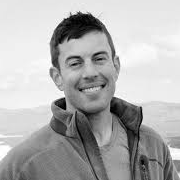By Seth Ulinski
I know a thing or two about rebuilding lost confidence. When I was only 16, a car accident left me unable to walk for six months. I had broken bones, a collapsed lung. I required reconstructive surgery. Day by day, month by month, I had to re-learn how to do the daily things we take for granted.
But being ejected from a car didn’t take nearly the same emotional toll as a challenge I would face 15 years later: thyroid eye disease.
I had just taken a new job in New York City. It was the next step in my growing marketing career. I had just bought my first house. These exciting events were also stressors. They could have been the “trigger events” that brought on my first autoimmune challenge, Graves’ disease. This is an autoimmune disease where the immune system attacks the thyroid. My symptoms included rapid heartbeat, sweating, inability to sleep and weight loss.
Skip forward several months, and I was finally getting my arms wrapped around the symptoms. I had worked tirelessly with my primary care doctor and endocrinologist. I was feeling hopeful.
Then thyroid eye disease crept onto the scene. It too is an autoimmune disease, one where the immune system stimulates tissue and fat growth behind the eye.
At first, I noticed the bloodshot look in my eyes, then a slight bulge in their appearance. These symptoms grew worse. I started spending 30 minutes each morning with an ice pack against my swollen eyes, trying to camouflage my symptoms. Even so, I often showed up for work looking like I’d been on a bender the night before. My reading glasses became my mask anytime I was in public.
I wasn’t the only one noticing my changing appearance. I suspected co-workers were talking. Casual acquaintances would ask, “Are you sober?”, confirming my fears.
Thyroid eye disease felt like a cloud perpetually hanging over me. The stares, the comments, they crushed my spirit. How much longer will I look like this?, I wondered. Will I get back the old me?
My doctor was seasoned and sympathetic, but when I asked about interventions he could only say, “Not yet.” At that time, patients and doctors had to wait for the disease to go dormant before they could treat it. For me, that was 18 agonizing months. Only then could doctors finally perform orbital decompression, surgically removing excess tissue in the eye socket and allowing my eyes to settle back into a normal position.
Years after my symptoms subsided, I came upon a man panhandling in the New York subway. He held a sign noting his “thyroid illness,” the effects of which were painful to see. His eyes were bloodshot, protruding, unsightly and uncomfortable for all those who passed. I knew immediately that he suffered from a severe case of thyroid eye disease. We chatted briefly and I gave him the name of my surgeon. My heart and wallet went out to him. Although we only spoke for a minute or two, he made a lasting impression on me: I will never forget how debilitating thyroid eye disease can be.
Today, people battling the disease are in a much better place. Earlier this year the Food and Drug Administration approved the first-ever treatment for thyroid eye disease, an infused medicine that alters the course of the disease. It means patients like me finally have a treatment option. It means they could avoid surgery. It means they won’t have to wait for months or years to break the disease’s hold on their lives.
The FDA’s announcement, for me, was bittersweet. It brought back the memories, still fresh, of how thyroid eye disease nearly destroyed my self-confidence. A disease manifesting in my eyes changed the way people saw me, and almost changed the way I saw myself.
For those who face thyroid eye disease today, I encourage them to get as much information as they can. I encourage them to see health care providers, to seek multiple opinions if necessary. I urge them to fight for insurance coverage that’s robust and offers seamless access to the life-altering treatment that is now available.
And I hope, through my story and others’, that they find confidence in knowing that they are not alone.
